Palay Production
Northern Mindanao produced 173,068 metric tons of palay in the first quarter of 2020. This is a decrease of 5.7 percent from the previous year’s production for the same quarter.
Palay production in rainfed farms grew by 10.1 percent while palay production in irrigated farms contracted by 6.9 percent.
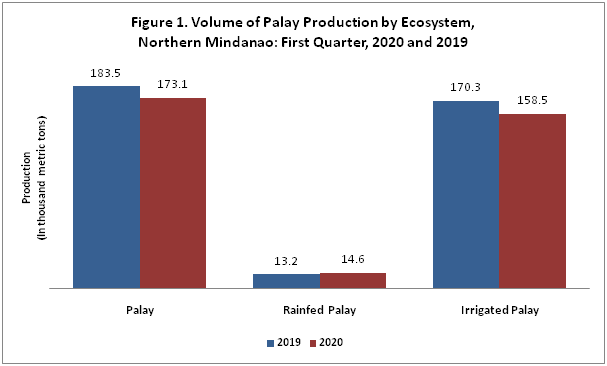
Among provinces, Bukidnon recorded the largest production of palay comprising 69.9 percent of the region’s total production in the first quarter of 2020. All provinces in the region showed a decrease in palay production from its corresponding production volume in the same quarter of 2019.
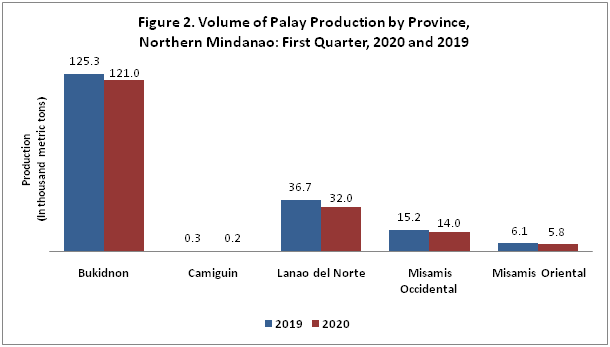
Area Harvested for Palay
The total area harvested for palay in the first quarter of 2020 was 40,231 hectares. This is a decrease of 4.5 percent, from 42,125 hectares in the first quarter of 2019. Area harvested in rainfed farms increased by 4.0 percent while area harvested in irrigated farms decreased by 5.4 percent.
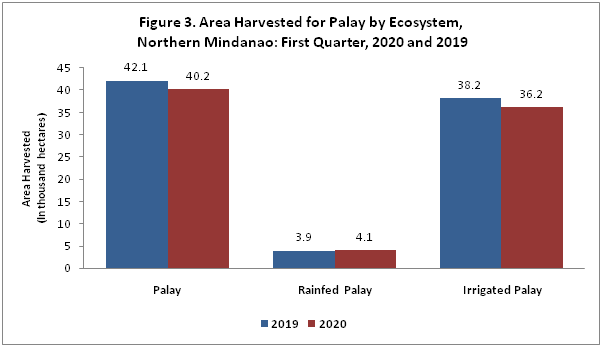
Corn Production
The total corn production for the first quarter of 2020 reached 320,776 metric tons, an increase of 5.8 percent from the first quarter corn production of 2019. Yellow corn production increased by 7.1 percent, while white corn production increased by 3.3 percent.
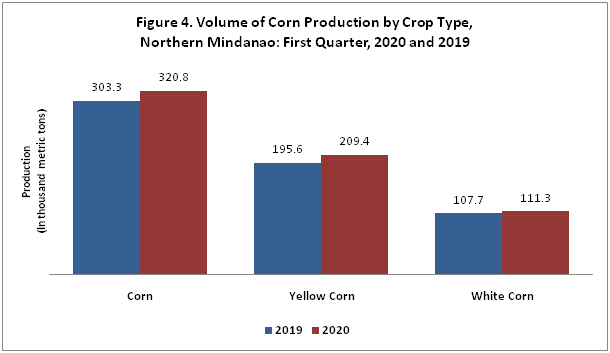
Among provinces, Bukidnon contributed the biggest share (69.2%) to the region’s total corn production. On the other hand, Misamis Oriental (11.3%) posted the highest growth in production, followed by Bukidnon (6.7%) and Lanao del Norte (1.6%). Camiguin’s corn production dropped by 28.4 percent.
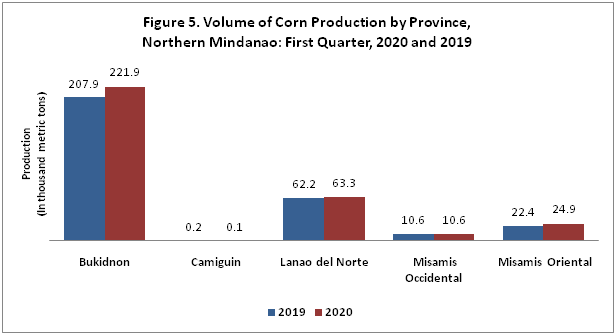
Area Harvested for Corn
In the first quarter of 2020, the total area harvested for corn was 102,601 hectares, a decrease of 0.2 percent from the total area harvested in the same quarter of 2019.
Area harvested for yellow corn was 52,519 hectares, lower by 0.2 percent than the area harvested in the same quarter of 2019. Likewise, the area harvested for white corn decreased by 0.2 percent, from 50,171 hectares to 50,082 hectares in the first quarter of 2019 and 2020, respectively.
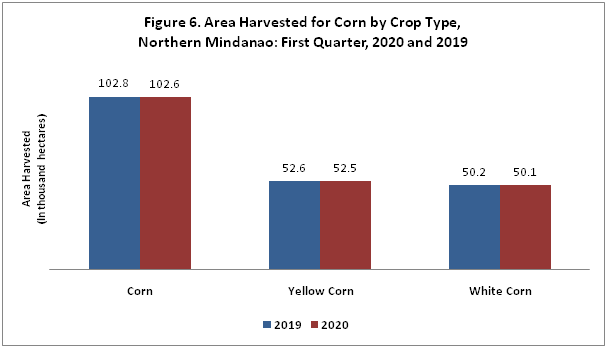
RUBEN D. ABARO, JR., CESE
Regional Director
For further inquiries, you may contact:
Statistical Operations & Coordination Division
Philippine Statistics Authority Regional Statistical Service Office 10
2nd Floor, Bldg. 4, Pride Rock Business Park
Gusa Highway, Cagayan de Oro City
Email: psaregion10@gmail.com
Telefax: (088) 856-4778
TECHNICAL NOTES
The Palay and Corn Production Survey (PCPS) is one of the major agricultural surveys conducted by the Philippine Statistics Authority (PSA). This generates estimates on palay and corn production, area, yield and other production-related data that serve as inputs for policy making and programs on palay and corn. More importantly, the production data generated from the survey are direct inputs to the Performance of Agriculture (PAR) report and accordingly to the computation of Gross Domestic Product (GDP).
Reference Periods
January Survey round – October to December
April Survey round – January to March
July Survey round – April to June
October Survey round – July to September
Production refers to quantity produced and actually harvested during the reference period. It includes those harvested but damaged, stolen, given away, consumed, given as harvesters’ and threshers’ shares, reserved, etc. Production from seed growers which are intended for seed purposes is excluded from the survey.
Area harvested refers to the total area harvested to palay/corn during the reference quarter. It may be less than or equal to the total area planted to palay/corn.
Irrigated Farms refer to area with irrigation facilities supplying water through artificial means like gravity, force/power, pump, etc. Irrigated area becomes rainfed only when the irrigation system is no longer operational for the past two (2) years and beyond repair and there is no plan of irrigating the farm.
Rainfed Farms refer to area that holds standing water but solely dependent on rainfall for its water supply. It may have dikes that retain rainwater.
Yield refers to the derived value in dividing production by the area harvested. It shows the relationship on how a certain area performs in terms of the quantity of produce.

